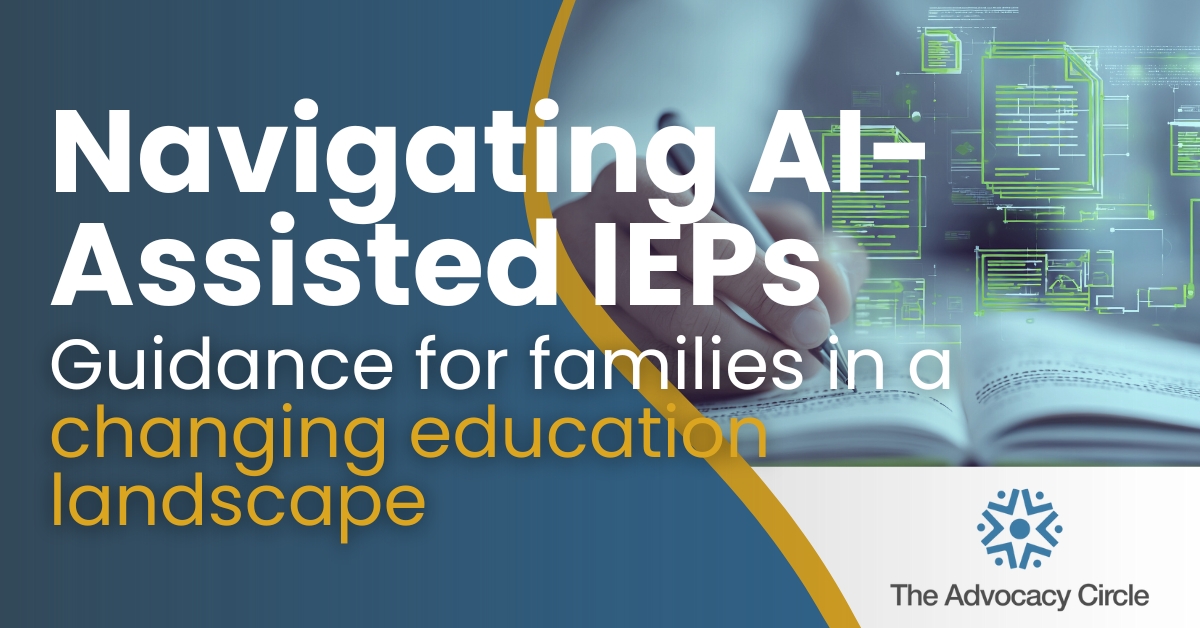The Advocacy Circle Helps Families Navigate AI-Assisted IEPs With New Parent Guidance
Schools are testing AI to help draft IEPs. TAC offers guidance so families understand how AI is used and ensures plans stay individualized and legally sound.
Our mission is to demystify both special education and technology”
FARMINGTON HILLS, MI, UNITED STATES, November 25, 2025 /EINPresswire.com/ -- As artificial intelligence (AI) tools begin to appear more often in classrooms and school offices, many families are encountering a new question at IEP time: “Was AI used to help write this?” — Dan Rothfeld
Recent reporting by Disability Scoop, including the article “Concerns Raised As Teachers Increasingly Use AI To Write IEPs,” has highlighted how some educators are testing AI to support portions of IEP drafting for students with disabilities.
While the technology can streamline paperwork, parents want to understand what it means for their child’s plan and their own role in the process.
In response, The Advocacy Circle (TAC), a subscription-based education and coaching platform that integrates AI-driven tools with human expertise, is introducing new resources to help families ask informed questions and use technology as an ally instead of an obstacle.
“At TAC, we see AI as a way to help families and professionals work smarter, not as a substitute for human judgment,” said Dan Rothfeld, Chief Operating Officer of The Advocacy Circle. “Our platform uses AI to organize information, surface patterns, and suggest questions, but the decisions always rest with families, educators, and, when appropriate, legal advocates.”
TAC’s new guidance focuses on practical steps families can take when AI is part of the IEP landscape:
• Understanding the role of AI: Clear explanations of the different ways schools might use AI, from drafting language to analyzing progress, and how that fits within IDEA’s requirements.
• Questions to ask at meetings: Simple prompts parents can use to learn whether AI was used, what information was entered, and how the team ensured the IEP reflects their child’s unique needs.
• Spotting where human judgment matters most: Guidance on reviewing goals, services, and accommodations to confirm they line up with the child’s evaluations, strengths, and challenges, not just generic templates.
• Data and privacy awareness: Checklists to help families talk with schools about how student information is protected when technology tools are involved.
“Our mission is to demystify both special education and technology,” Rothfeld said. “We want parents to feel comfortable saying, ‘I’m open to tools that help us collaborate, but I also want to be sure this plan sounds like my child.’ That balance of openness and healthy skepticism is exactly where TAC lives.”
Within TAC’s learning tracks and coaching sessions, families can see how AI can be used responsibly to:
• Generate draft questions to bring to an IEP meeting;
• Highlight potential gaps in services based on a child’s profile; and
• Organize documents and timelines so parents can stay on top of multi-year plans.
“All of that is designed to support, not replace, the human relationships at the heart of an effective IEP team,” Rothfeld added.
About The Advocacy Circle
The Advocacy Circle (TAC) is a subscription-based education and coaching platform that combines AI-enabled tools with human expertise to help families navigate special education and disability-related school issues. Through on-demand learning, live sessions, and practical resources, TAC empowers parents and caregivers to understand their rights, participate effectively in IEP and 504 meetings, and work collaboratively with schools to secure appropriate supports for their children. www.theadvocacycircle.com
Source: Disability Scoop, “Concerns Raised As Teachers Increasingly Use AI To Write IEPs,” November 18, 2025.
Dan Rothfeld
The Advocacy Circle
+1 248-919-4407
TAConline@theadvocacycircle.com
Visit us on social media:
Instagram
Facebook
Legal Disclaimer:
EIN Presswire provides this news content "as is" without warranty of any kind. We do not accept any responsibility or liability for the accuracy, content, images, videos, licenses, completeness, legality, or reliability of the information contained in this article. If you have any complaints or copyright issues related to this article, kindly contact the author above.


